Related Research Articles

Finland, officially the Republic of Finland ), is a Nordic country in Northern Europe. It borders Sweden to the northwest, Norway to the north, and Russia to the east, with the Gulf of Bothnia to the west and the Gulf of Finland to the south, across from Estonia. Finland covers an area of 338,145 square kilometres (130,559 sq mi) with a population of 5.6 million. Helsinki is the capital and largest city. The vast majority of the population are ethnic Finns. Finnish and Swedish are the official languages, Swedish being the native language of 5.2% of the population. Finland's climate varies from humid continental in the south to boreal in the north. The land cover is primarily a boreal forest biome, with more than 180,000 recorded lakes.
The transport system of Finland is well-developed. Factors affecting traffic include the sparse population and long distance between towns and cities, and the cold climate with waterways freezing and land covered in snow for winter.

Helsinki is the capital, primate, and most populous city of Finland. Located on the shore of the Gulf of Finland, it is the seat of the region of Uusimaa in southern Finland and has a population of 665,558. The city's urban area has a population of 1,268,296, making it by far the most populous urban area in Finland as well as the country's most important center for politics, education, finance, culture, and research. Helsinki is located 80 kilometres (50 mi) north of Tallinn, Estonia, 400 km (250 mi) east of Stockholm, Sweden, and 300 km (190 mi) west of Saint Petersburg, Russia. It has close historical ties with these three cities.

Kauniainen is a small town and a municipality of 10,248 inhabitants in the Helsinki Metropolitan Area in Uusimaa, Finland. It is surrounded and enclaved by the City of Espoo, in the Capital Region of Greater Helsinki. Kauniainen was founded by a corporation in 1906, AB Grankulla, that parcelled land and created a suburb for villas; Kauniainen received the status of a market town in 1920, the Finnish name in 1949 and the title of kaupunki in 1972.
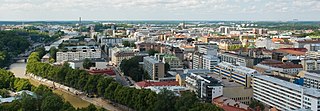
Turku is a city and former capital on the southwest coast of Finland at the mouth of the Aura River, in the region of Finland Proper (Varsinais-Suomi) and the former Turku and Pori Province. The region was originally called Suomi (Finland), which later became the name for the whole country. As of 31 March 2021, the population of Turku was 194,244 making it the sixth largest city in Finland after Helsinki, Espoo, Tampere, Vantaa and Oulu. There were 281,108 inhabitants living in the Turku Central Locality, ranking it as the third largest urban area in Finland after the Capital Region area and Tampere Central Locality. The city is officially bilingual as 5.5 percent of its population identify Swedish as a mother tongue.
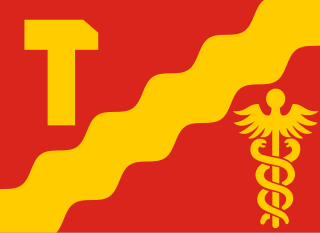
Tampere is a city in the Pirkanmaa region, located in the western part of Finland. Tampere is the most populous inland city in the Nordic countries. It has a population of 244,029; the urban area has a population of 341,696; and the metropolitan area, also known as the Tampere sub-region, has a population of 393,941 in an area of 4,970 km2 (1,920 sq mi). Tampere is the second-largest urban area and third most-populous individual municipality in Finland, after the cities of Helsinki and Espoo, and the most populous Finnish city outside the Greater Helsinki area. Today, Tampere is one of the major urban, economic, and cultural hubs in the whole inland region.

The Finns Party, formerly known as the True Finns, is a right-wing populist political party in Finland. It was founded in 1995 following the dissolution of the Finnish Rural Party.

Jyväskylä is a city and municipality in Finland in the western part of the Finnish Lakeland. It is located about 150 km north-east from Tampere, the third largest city in Finland; and about 270 km north from Helsinki, the capital of Finland. The Jyväskylä sub-region includes Jyväskylä, Hankasalmi, Laukaa, Petäjävesi, Toivakka, and Uurainen. Other border municipalities of Jyväskylä are Joutsa, Jämsä and Luhanka.
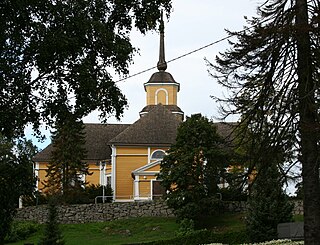
Nurmijärvi is the most populated rural municipality of Finland, located 37 kilometres (23 mi) north of the capital Helsinki. The neighboring municipalities of Nurmijärvi are Espoo, Vantaa, Tuusula, Hyvinkää and Vihti, and it is part of the Greater Helsinki. The population of the municipality is 44,435 inhabitants. In recent decades, it has been one of the fastest growing municipalities in the Greater Helsinki and also in whole Finland in terms of population. The close proximity to Helsinki has led to a considerable growth of the major villages such as Klaukkala, Rajamäki and Röykkä. Klaukkala is the biggest built-up area of Nurmijärvi, which nowadays is considered a dormitory town of Helsinki. The Nurmijärvi church village (Kirkonkylä) is the administrative centre of the municipality, although the clear emphasis on population growth is in Klaukkala.

Kuopio is a Finnish city and municipality located in the region of Northern Savonia. It has a population of 122,615, which makes it the 8th most populous municipality in Finland. Along with Joensuu, Kuopio is one of the major urban, economic, and cultural hubs of Eastern Finland. At the end of 2018, its urban area had a population of 89,307.

Joensuu is a city and municipality in North Karelia, Finland, located on the northern shore of Lake Pyhäselkä at the mouth of the Pielinen River (Pielisjoki). It was founded in 1848 by Russian Emperor Nicholas I. The population of Joensuu is 77,480, and the economic region of Joensuu has a population of 115,000. It is the 12th largest city in Finland. The nearest major city, Kuopio in North Savonia, is located 136 kilometres (85 mi) to the west. From Joensuu, the distance to Lappeenranta, the capital of South Karelia, is 233 kilometres (145 mi) along Highway 6.

Kankaanpää is a town and municipality of Finland. Kankaanpää was founded in 1865, became a township in 1967 and finally a town in 1972. It is located in the crossroads of Hämeenkangas and Pohjankangas ridges. It belongs to the region of Satakunta. Kankaanpää has a population of about 12,500 inhabitants, which make it the third largest municipality in the Satakunta region in terms of population, after the city of Pori and the town of Rauma. Pori is located 53 kilometres (33 mi) southwest of Kankaanpää.

Kannonkoski is a municipality of Finland.
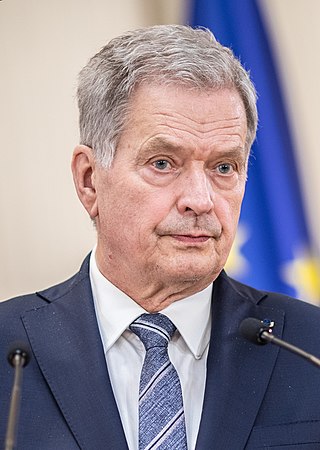
Sauli Väinämö Niinistö is a Finnish politician who has served as the 12th president of Finland since March 2012.
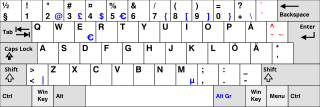
The two main official languages of Finland are Finnish and Swedish. There are also several official minority languages: three variants of Sami, as well as Romani, Finnish Sign Language and Karelian.
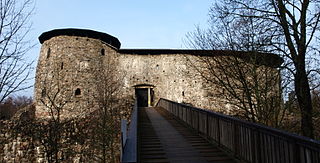
Raseborg is a town and municipality of Finland. It was created on January 1, 2009, when the municipalities of Ekenäs, Karis and Pohja were consolidated into a single town, creating the largest Swedish-speaking-majority city of Finland in terms of population. Of these, Ekenäs now serves as the administrative center of Raseborg. The name of the new town is based on the Raseborg Castle located in Ekenäs, or formerly in the municipality of Snappertuna. Historically the name of the county was also Raseborg in the 14th century.

Pargas is a town and municipality of Finland, in the Archipelago Sea, the biggest archipelago in the world by the number of islands, 50,000. The big limestone mine in Pargas is the base of the main industry and except for the central parts, the municipality is still mostly rural.

Nokia Arena is an indoor arena in Tampere, Finland. It hosts ice hockey games, including the 2022 Men's World Championship, and large cultural events. It is also the home arena of Ilves and Tappara of the SM-liiga. Its construction was approved by the City Council of Tampere on 19 May 2010. The arena was officially opened on 3 December 2021.

Esapekka Lappi is a Finnish rally driver. He is the 2012 Finnish Rally Champion, 2014 European Rally Champion and the 2016 WRC-2 Champion.He now drives for Hyundai Motorsport

Kalle Rovanperä is a Finnish professional rally driver who competes in the World Rally Championship (WRC) for Toyota Gazoo Racing WRT, alongside co-driver Jonne Halttunen. He is the reigning World Champion. As the son of former WRC driver Harri Rovanperä, he garnered international attention by starting rallying at an exceptionally young age.
References
- ↑ "Kantri kertoo peltoautoilusta". Maaseuduntulevaisuus.fi (in Finnish). 14 October 2014. Retrieved 5 December 2022.
- ↑ "Peltoauto on hyvä ja lisäksi edullinen". Hs.fi (in Finnish). 30 December 2006. Retrieved 5 December 2022.
- 1 2 Kallio, Saara-Maija (18 September 2004). "Peltoautoilussa rapa roiskuu ja pelti kolisee". Ts.fi (in Finnish). Retrieved 5 December 2022.
- ↑ Ranta, Jarno (1 August 2014). "Työntekijät virittivät 4-vuotiaan pojan autoa - maitohampaita menettänyt ajaa nyt MM-kullasta". Yle.fi (in Finnish). Retrieved 5 December 2022.
- ↑ Laihonen, Karri (25 February 2017). "Siikaisten Peltorance hurmaa: "Oli autossa 6 tai 600 hevosvoimaa, niin miehet saavat kilpailun aikaiseksi"". Yle.fi (in Finnish). Retrieved 29 December 2022.